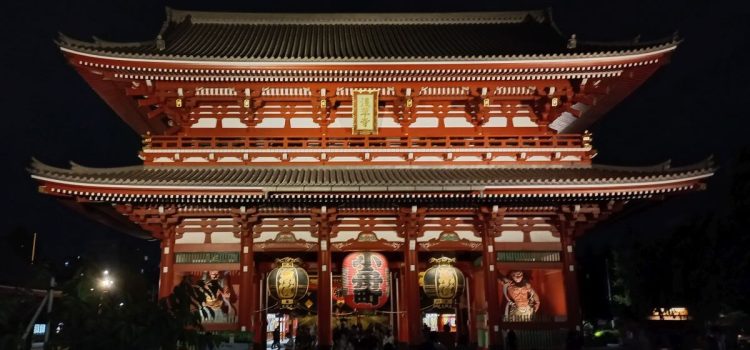
Our second trip to Japan began with a direct flight from Vancouver, Canada to Tokyo’s huge Narita airport. We flew on JAL (Japan Airlines) and even at YVR we were reminded about just how orderly and efficient just about everything Japanese is. Our flight was scheduled for 14:05 and our online boarding passes said that boarding time was 13:45. Say what? Twenty minutes to board an entire aircraft? At check-in at the airport the time was changed to 13:40, which still didn’t seem like enough time. Then when we headed down to the gate promptly at 13:40 boarding hadn’t even begun. “Aha!” we thought; they are going to be late leaving for sure. But then at exactly 13:45 boarding started, everyone boarded in an orderly fashion and took their seats, and we pushed back from the gate 3 minutes early! Wow; an entire 787 Dreamliner boarded in 17 minutes.
An uneventful flight that arrived 20 or 30 minutes late due to strong headwinds. The crew seemed to take that minor delay personally and apologized at least three different time for the late arrival.
No visa for Canadians to enter Japan for up to 90 days, but two separate paper forms and we had our passports checked three different times before being allowed to enter the country, duly fingerprinted and photographed. Trains are available directly from Narita to any point in Tokyo and an hour’s ride on a limited express brought us to the Asakusa train station where we wheeled our carry-ons though a pedestrian area past the Sensoji Temple (above) to our hotel. Our Japanese friends had told us that Asakusa was too “touristy” but we found it to be an interesting area with convenient connections, and the availability of English menus in many of the restaurants was a bonus.
Despite wanting to sleep in the next morning due to jet lag, our GuruWalk tour of the Imperial Palace East Garden (https://www.guruwalk.com/walks/63437-tokyo-imperial-palace-storytelling-walk-experience) had been moved ahead by 3 hours so we were forced to get moving. The truth be told, there isn’t all that much left to see at the Imperial Palace and its gardens. The palace itself isn’t open to visitors and the ruins that are left aren’t all that impressive. But the stories told by our guide “K” (NOT the K from MIB!) brought the place to life and kept us entertained for 2-1/2 hours. From historical Edo (the old name for Tokyo) we switched to a quirky, modern side of things as we took a stroll down Kappabashi-dori or “kitchen street”. Imagine every form of cookware, tableware, cutlery (so many knife stores!) in store after store for what seemed like kilometres. While the store devoted entirely to chopsticks was unique, the retailers of every possible restaurant food from sushi to colourful deserts and mugs of beer all rendered in plastic were even more amusing. Jet lag meant that we had to return to the hotel for a couple of hours of catch-up sleep before heading out for dinner. A high school exchange friend from 50 years gone by treated us to a fantastic dinner of sukiyaki.
The next morning, we met our friend Yuko again and had the benefit of a Tokyo resident’s guidance through the complex subway system of the world’s largest metropolis. We started off with a visit to Team Lab, a “digital art installation”. Certainly not traditional artworks, the audio and visual effects are hard to describe (and even harder to photograph); the closest that we could say is that it’s like being inside a giant, 3-D screensaver! From the modern we went back in time to the contemplative Meiji Shrine, dedicated to the deified spirits of Emperor Meiji and his wife, Empress Shōken. Rebuilt after WWII, this enormous Shinto shrine is in active use today with walls and walls of prayers inscribed on wooden plaques inscribed by supplicants. Since we were already in the Shibuya area, we oscillated back to the modern and visited Shibuya Crossing, which according to Wikipedia is the busiest pedestrian crossing in the world. It was fascinating to see up to 3,000 people do a pedestrian scramble (in which traffic is stopped in all directions) every 2 minutes.
Check out our YouTube video of one scramble, as shot from the Starbucks overlooking the intersection. Watch for the parade of go-carts entering the crossing at the end of the video.
After seeing enough pedestrians dodging cars, we caught a bite to eat and returned to our hotel for a soak in the “onsen” (natural spring bath). Presumably the water was trucked in to Tokyo!
The following day was our visit to the Grand Sumo Tournament, but that deserves a whole separate post!
See our images of Tokyo on Flickr: https://www.flickr.com/photos/100countries/albums/72177720329272469
















